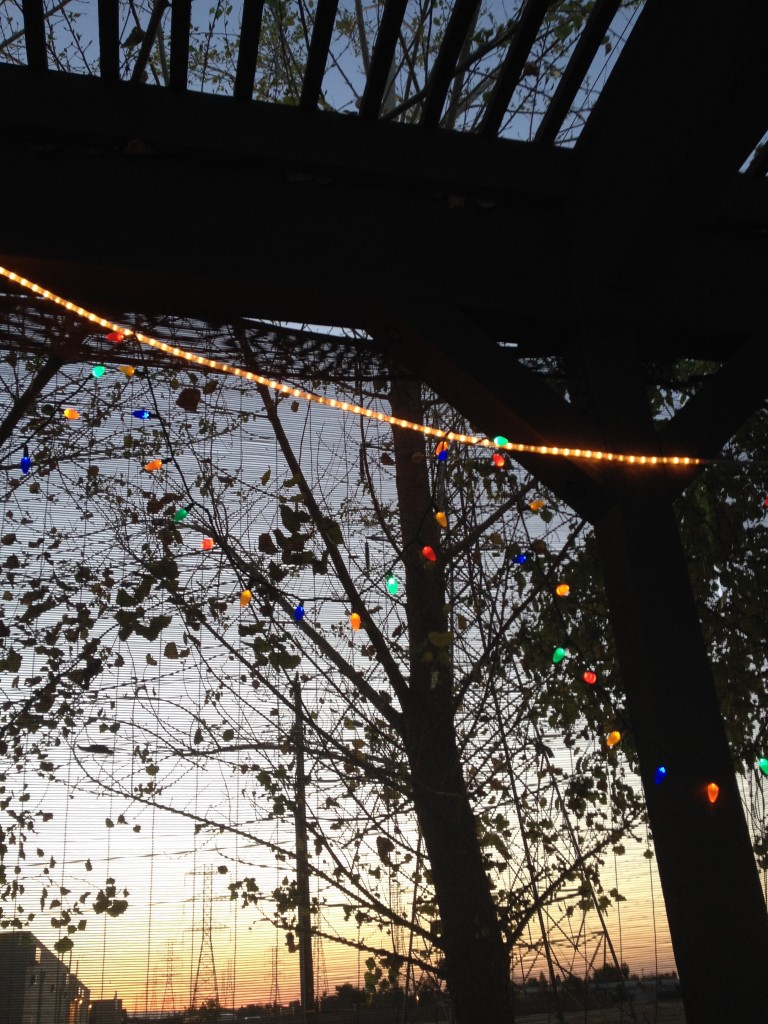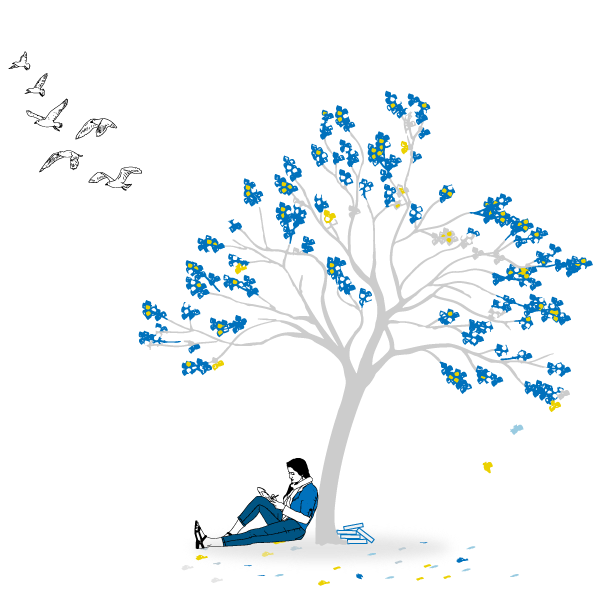attention to details: a way of being
September 7, 2014.
The article in The New Yorker, “Creativity Creep” by Joshua Rothman, is probably one of the most succinct and apt essays I have read on creativity since the dawn of social media and the rise of “creativity” as a “job”. Maybe there is hope after all if The New Yorker is willing to publish such an essay. There is always hope, I suppose.
Mr. Rothman writes:
People like Samuel Taylor Coleridge argued that we don’t just store things in our imaginations; we transform them. Coleridge made a useful distinction, largely lost today, between two kinds of imagining. All of us, he thought, have a workaday imagination, which we use to recall memories, make plans, and solve problems; he called this practical imagination “fancy.” But we also have a nobler kind of imagination, which operates […] like “a human reflex of God’s creative energy.” The first kind of imagination understands the world; the second kind cares about it and brings it to life. In the “Prelude,” Wordsworth describes this kind of imagination as “an auxiliary light” that changes everything it illuminates.”
This watchful, inner kind of creativity is not about making things but about experiencing life in a creative way; it’s a way of asserting your own presence amidst the much larger world of nature, and of finding significance in that wider world. By contrast, our current sense of creativity is almost entirely bound up with the making of stuff. If you have a creative imagination but don’t make anything, we regard that as a problem—we say that you’re “blocked.”
How did creativity transform from a way of being to a way of doing?
[…]
It sounds bizarre, in some ways, to talk about creativity apart from the creation of a product. But that remoteness and strangeness is actually a measure of how much our sense of creativity has taken on the cast of our market-driven age. We live in a consumer society premised on the idea of self-expression through novelty. We believe that we can find ourselves through the acquisition of new things. Perhaps inevitably, we have reconceived creativity as a kind of meta-consumption: a method of working your way toward the other side of the consumer-producer equation, of swimming, salmon-like, back to the origin of the workflow. Thus the rush, in my pile of creativity books, to reconceive every kind of life style as essentially creative—to argue that you can “unleash your creativity” as an investor, a writer, a chemist, a teacher, an athlete, or a coach. Even as this way of speaking aims to recast work as art, it suggests how much art has been recast as work: it’s now difficult to speak about creativity without also invoking a profession of some kind.
[…]
Among the many things we lost when we abandoned the Romantic idea of creativity, the most valuable may have been the idea of creativity’s stillness. If you’re really creative, really imaginative, you don’t have to make things. You just have to live, observe, think, and feel.
This is what I have been doing in this space every Sunday, testing my “human reflex”, sometimes willingly and other times questioning that same reflex. Moreover, my recent work, has taken me to experience depths of living, observing, breathing, feeling “creativity” in ways I can only hope to one day articulate in some tangible medium. And finally, since the advent of social media, people are of two views when it comes to absence from “blogging” or “sharing”: either one is living such an amazing life that there is no time to share photos or thoughts or alternatively, that an individual’s life must be so distressful that it doesn’t merit sharing. Of course, my point is about when people don’t share as much as they once did or at all, not those who report, the good or the challenging, for a sake of community and sharing, however regularly and openly.
Life is just life, it goes on. Yes, it’s sweeter when shared by those who “get it” but when one is truly original, majority of the people don’t “get it”. At first.
Another article, also about creativity, was featured in ars technica and titled “Is there a creativity deficit in science? If so, the current funding system shares much of the blame” by Ben McNeil.
Ben McNeil offers a notable quote by John Ioannidis who is head of the Stanford Prevention Research Center in California and links the quote to other sources.
“A truly innovative idea cannot be judged by peers: if it is truly innovative, no peer has any clue about it; if peers already know about it, it is not innovative” said John Ioannidis, head of the Stanford Prevention Research Centre in California. Ioannidis and others published a recent analysis called “Conform and be Funded“ where they show that safer, established ideas have a much better chance of being funded at the NIH than novel, creative ones.
To be fair, the bias against any risk is not limited to the NIH; it occurs across every governmental science agency globally.
I also found the following a bit unsettling:
In the early 1970s, Roger Kornberg, a 27-year-old Stanford PhD, was working at the Laboratory of Molecular Biology in Cambridge, England. With a modest post-doctoral salary, Kornberg was given freedom to explore untried and risky areas of research. This would ultimately allow him to make a revolutionary discovery about how DNA is copied in cells.
Kornberg would win the Nobel Prize in chemistry in 2006 for that work. Yet he told The Washington Post that he’s convinced his groundbreaking Nobel Prize winning idea would never have been funded today.
An unrelated short piece by William Childress titled “A Born Writer” in the most recent print issue of Writer’s Digest brought it all together for me in the form of a question that perhaps doesn’t have an answer. A side note I must mention: I have never had much interest in that magazine because the online version, with all the links and ads, has always felt manic to stay the least; however, I recently subscribed to print thanks to coming across a print copy at a book store which I found useful. Anyway, in the piece Childress writes, “…comments by Mom, friends or kin were useless. In their eyes, I was a success simply by putting words on paper. But they signed no checks. Editors are a writer’s link to reality. They know when they must tell a writer no–and they will. But sometimes I get lucky and hit the mark, and they say, ‘Thank you. This is exactly what we need.’ Then I try again, and again, and again…”
I reflected a lot about this “trying again and again” and the statement from the other article, “a truly innovative idea cannot be judged by peers”.
My primary reason for not having tried again and again (or just barely) is twofold: lack of time and that a part of me is quite satisfied with the audience I have (not to mention grateful!) and whenever I sit to write my objective is to deliver a valuable story where the words are crafted with hallmark care and whatever happens after that fades into the background. That being said, if I want signed checks, I have to try, at least once, twice, or thrice and do so beyond here.
What I know now without a doubt, thanks to the perfect articulation by Joshua Rothman, is that this space has been and will continue to be about sharing a way of being that is me, a way which also happens to be creative. This is also true for a lot of others who blog and share some phenomenal photos, words, and art. This is also true for many who don’t. Some of the most creative people I know, artists and otherwise, are not available via social media platforms. However, it is my hope, that a new consciousness within social media is emerging, where we are able to distinguish our inherently creative natures from creating meaningful Art “that changes everything it illuminates”. Stories are more than ideas and art is more than being creative. And while both kinds of creativity have their place, it would serve us all to approach each with more mindfulness. Mindfulness is not a job description or a test of creativity, it is a way of being.


Thank you for offering these distinctive, thoughtful articles, and your perspective too, on the welter of information about the artistic and scientific doings, at all stages, of people worldwide. (A very good thing, on balance, I think.) Ever since studying Wordsworth and Coleridge in college–just the first youthful glimpses of appreciating their poems’ beauties and insights–I have held in mind Wordsworth’s notion of “emotion recollected in tranquility” as the heart of poetic creation, and undoubtedly, of art in general. Experience–events and emotional responses to them–get sifted and transformed in memory, when one has the essential opportunity of still moments to consider them. (Your “Auguries” are all about this!) Wordsworth’s “Prelude” and his shorter lyrics feel so deeply quiet when one reads them (evidence of the stillness in their creation) yet are so moving with their leaps into profound feeling (recalled and conjured up for reader to witness). Annie, you provide such beautiful examples of this recollection in stillness, and its fruits, in your essays here too!
Artists have long been communal as well as solitary, desiring to share ideas at various gestational stages of this creative–transformative–process. Some ideas will travel farther on creative paths than others–every artist has had ideas they have tried out and laid aside. But seeing others at work can certainly be invigorating, giving a sense of shared purpose during the lonely times. It seems to me that social media are just another avenue for people, including artists, to be communal, like gathering in coffee-houses or salons, and as varied in its fruits. A budding idea can sometimes be as beautiful, sent out into the world for its little bit of time, as a fully opened rose, a fully realized artistic creation. I feel strongly that “appreciators” of these things have a big role to play too, and a lot social exchange online is in the form of “look at this (art, story, science) that someone did.” What looks like “consuming” to one person may feel like “appreciating” to another; it’s just one point in a continuum of experiencing and acknowledging our neighbors’ minds and spirits. And I did like the point the article made, and you reinforced, that one doesn’t always have to come up with an artistic “product” but rather adopt a creative outlook.
This sums up the guts of it for me.
“Among the many things we lost when we abandoned the Romantic idea of creativity, the most valuable may have been the idea of creativity’s stillness. If you’re really creative, really imaginative, you don’t have to make things. You just have to live, observe, think, and feel.”
One must, in my opinion, discover that our very presence where ever we are is an act of creativity. All else flows from there into whatever medium you choose to express yourself. The idea of trying and trying and trying again to please someone else and their idea of what creativity may be, can be and often is, a fruitless venture leaving one exhausted and uninspired.
Lucy, above, noted an important aspect as well, “…I did like the point the article made, and you reinforced, that one doesn’t always have to come up with an artistic “product” but rather adopt a creative outlook.” This is what really carries you to the finish line at the end of the day.